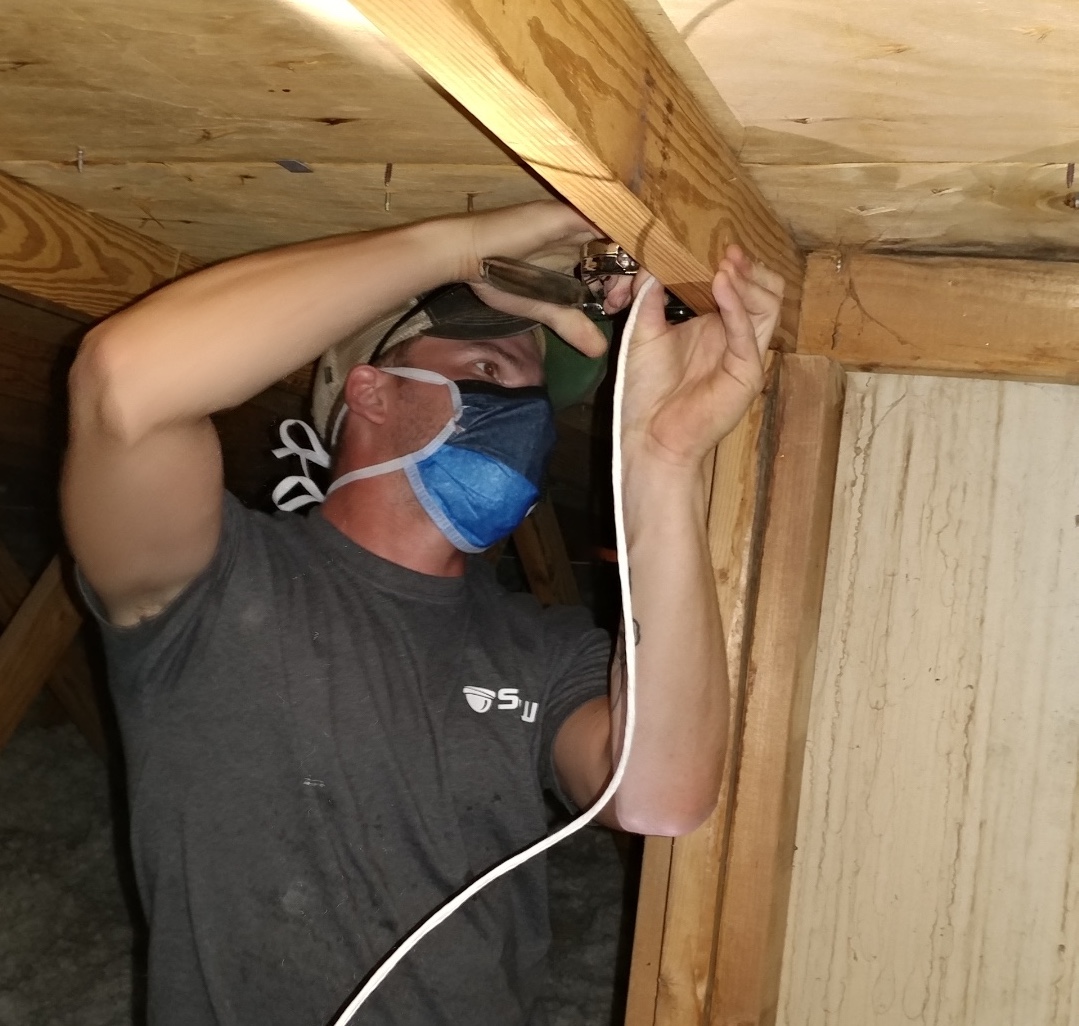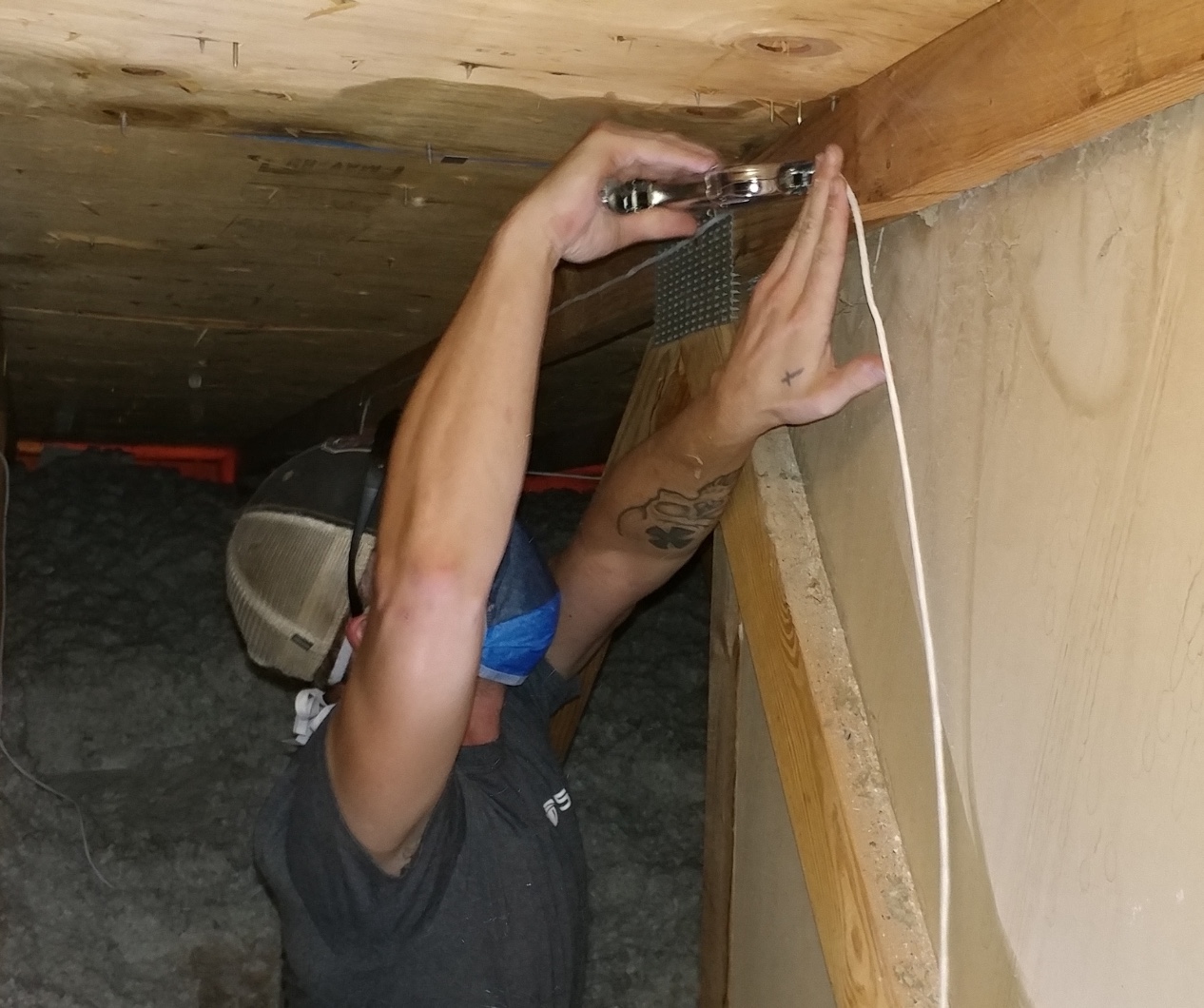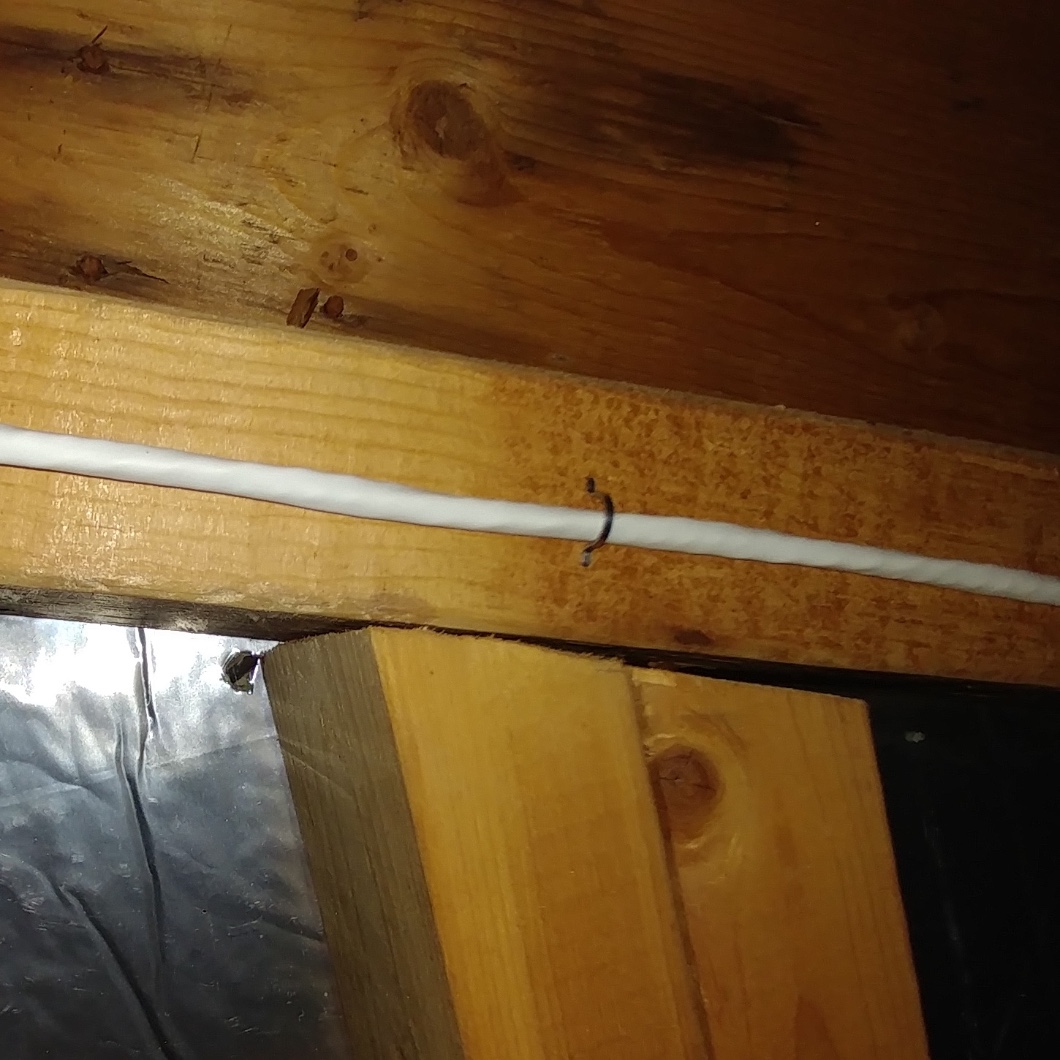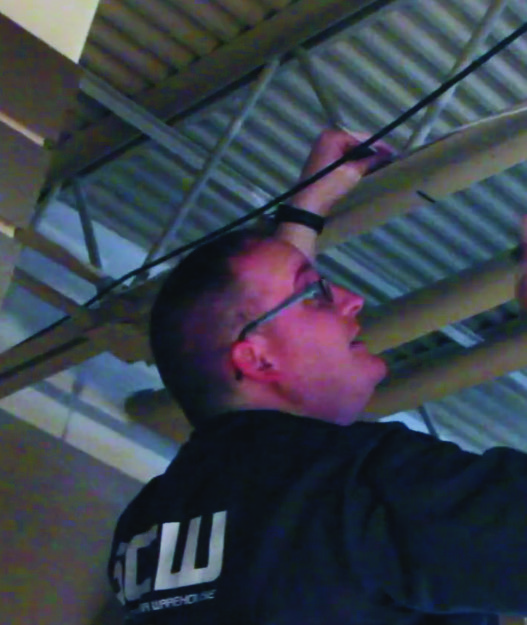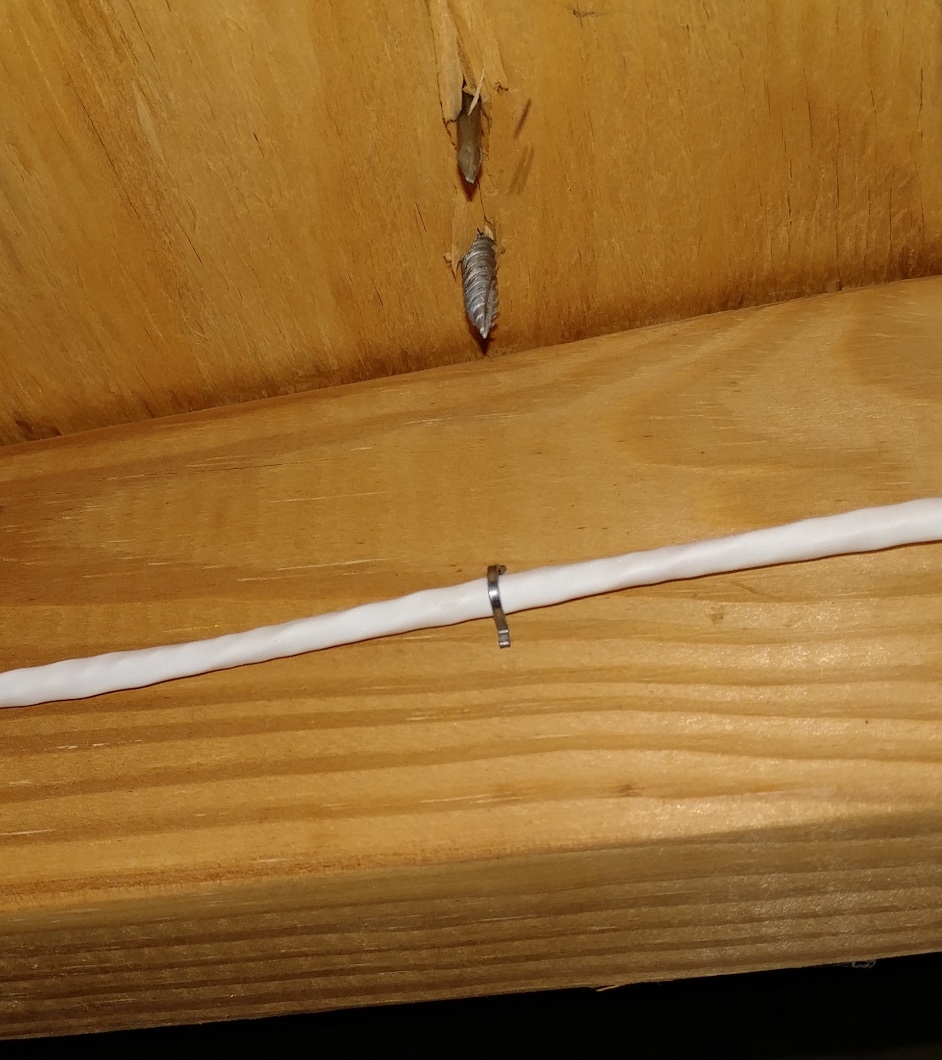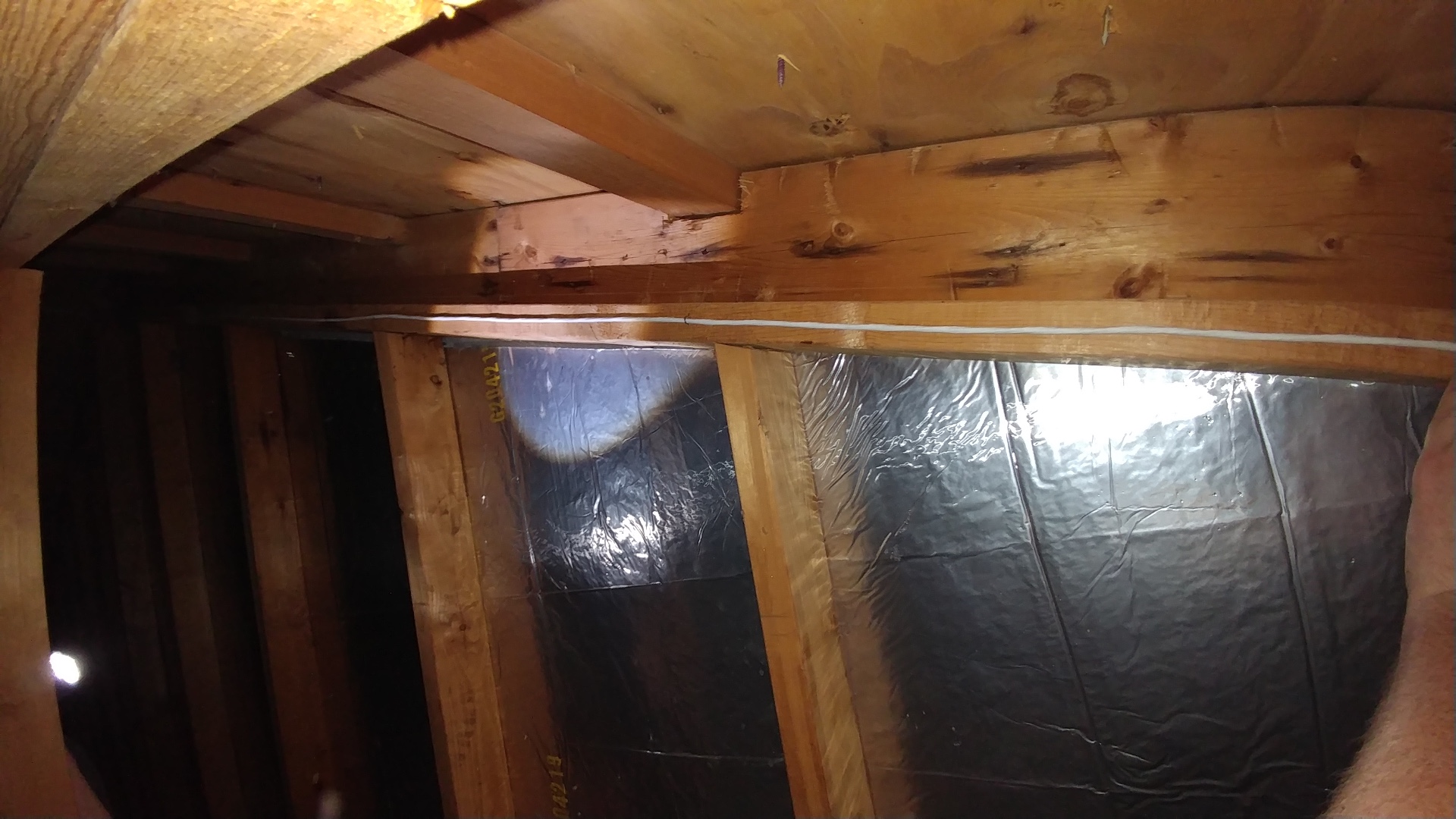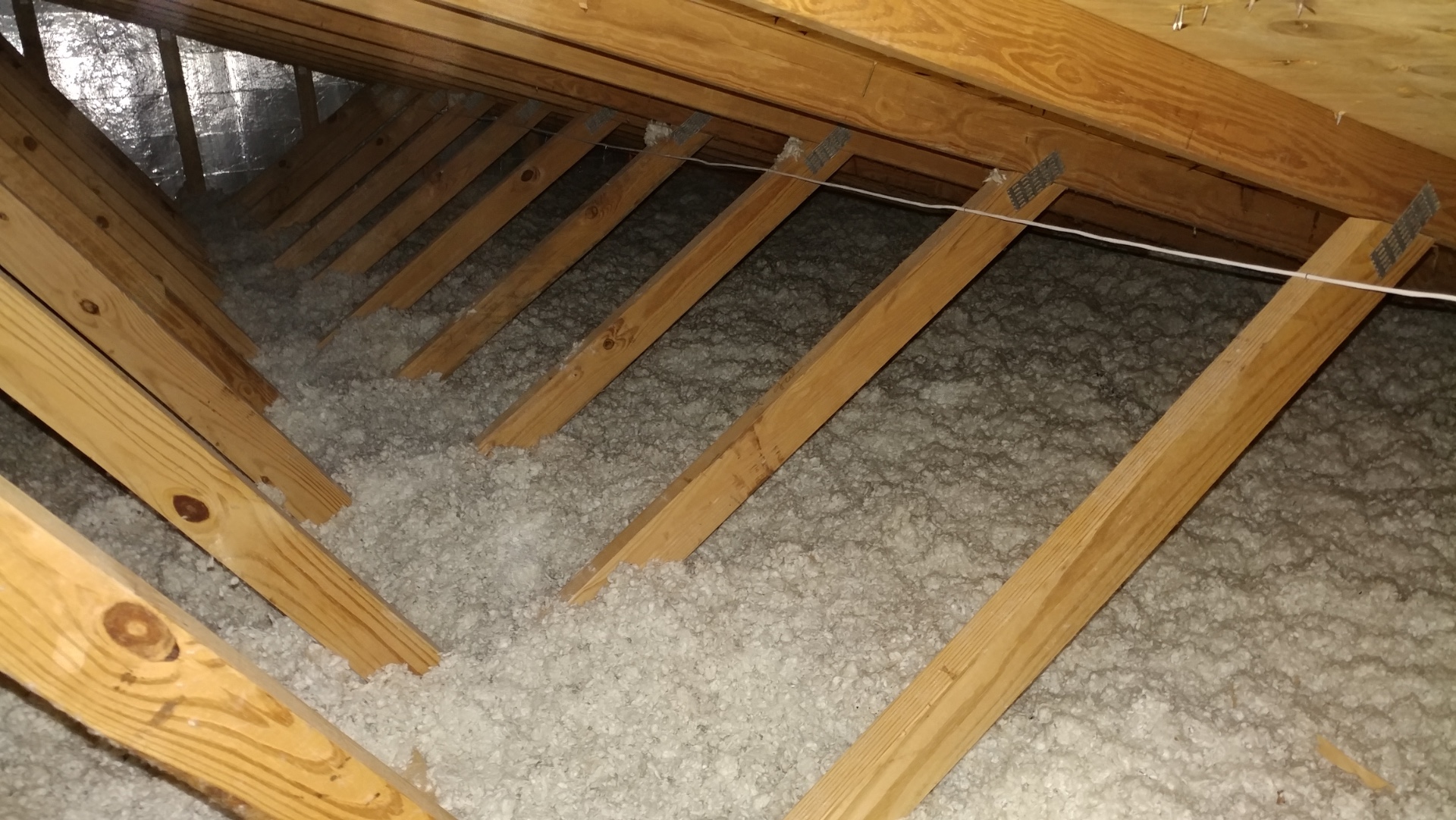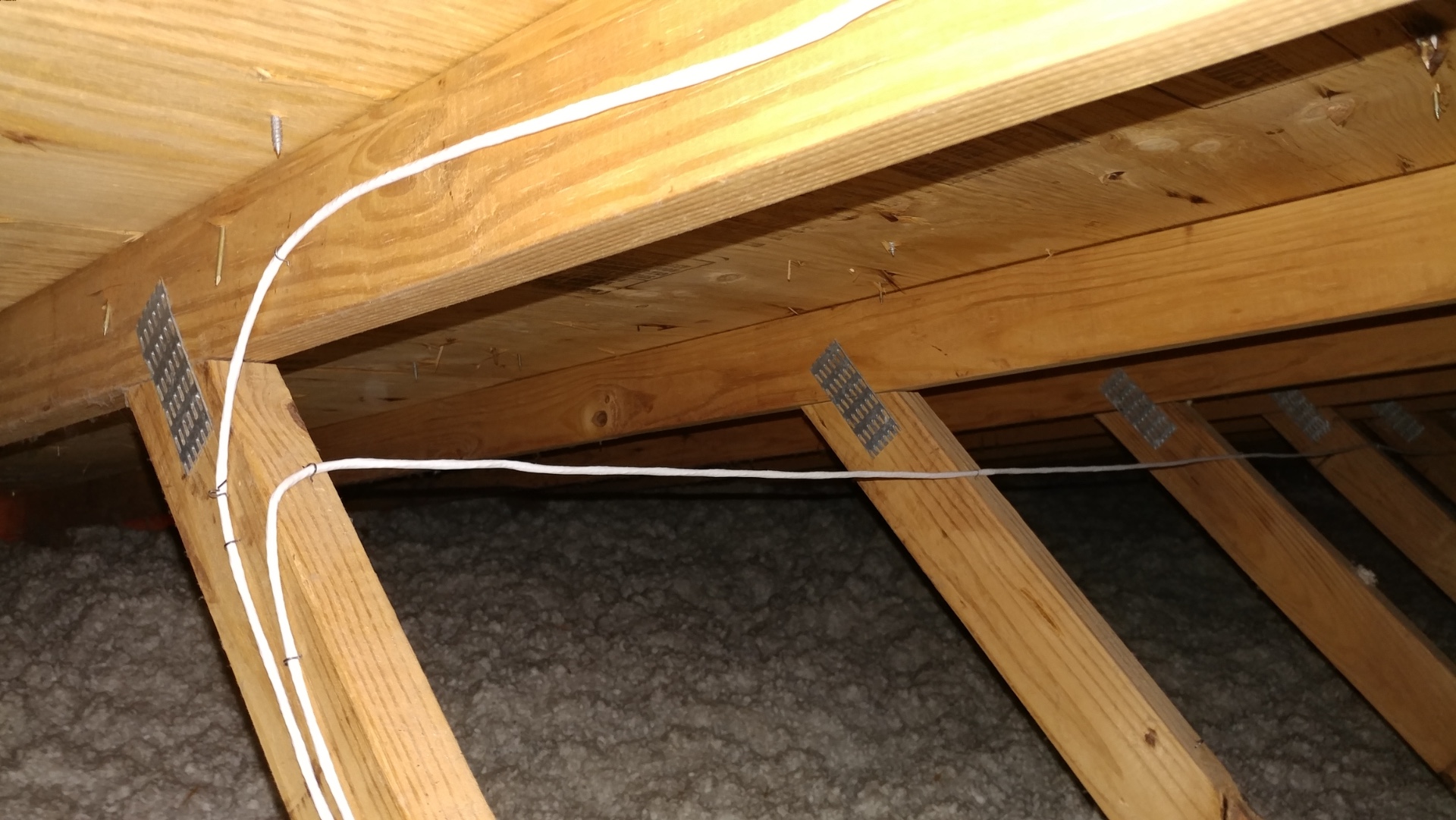Sometimes you don't need to protect a cable from weather or being damaged because the area where you are running the cable already has this as a feature. For example, running cable in attics, basements, rafters, and I beams often do not need conduit or other cable protection methods. These areas are usually already secure and weatherized. Here's how you run cable without conduit or tubing.
Step 1:
Often when running cable, you are going to have to get into an attic or some other place with insulation. You don't want to inhale fiberglass, so make sure you wear a mask.
Step 2:
Don't drape the cable on the floor. The NEC states that you can connect cable directly to a surface with straps, staples, cable ties, hangers, or similar fittings, but you have to secure it somehow. NEC 800.24; 300.11
We are using staples in the first two photos because the beams are wood.
We are using zip ties in this additional photo (from the video on the main installation portal page) because the beams were metal.
Reminder: Don't run cable next to the edge
The National Electrical Code, the regulatory body that certifies electricians and makes regulations for safety when running cables, and who, in most states governs the running of any sort of cable, requires all cable to be run with at least 1.26 inches from any framing members (joists, rafters, or studs), furring strips, or crown molding. NEC 300.4(D)
This picture is an excellent example as to why this rule exists. You can see in this photo that when the roof was being put on, the roofing nails extended through the roof tile and the interior plywood. Someday you may have to replace a roof tile, and may have your nail extend further than the roof tile by about this same amount. Better safe than sorry, you don't want to replace a cable if this happens.
Finished Results:
Whether you are going in straight lines along a surface (picture 1), straight lines draped between surfaces (picture 2), or turning corners (picture 3), your cable should be affixed to a solid surface. Don't just drape the cable on your ceiling, run it loose on the floor, or leave it on your drop ceiling. (Reminder: if you are going to run cables through an attic or other area which is used by your heating, air circulation, or air conditioner systems, you must use Plenum rated cables. NEC 830; NFPA 90A)


